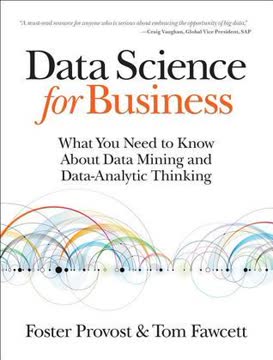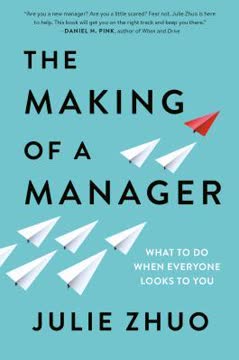Key Takeaways
1. Customer Centricity: Focus on Lifetime Value, Not Just Transactions
"Customer centricity is a strategy that aligns the development and delivery of a company's products and services with the current and future needs of its highest valued customers in order to maximize these customers' long-term financial value to the firm."
Paradigm shift. Customer centricity represents a fundamental shift from product-centric thinking to a strategy that prioritizes customer value over time. This approach recognizes that not all customers are equal in terms of their potential value to a company.
CLV as north star. At the heart of customer centricity is the concept of Customer Lifetime Value (CLV), which projects the total value a customer will bring to a company throughout their relationship. By focusing on CLV, companies can make more informed decisions about:
- Resource allocation
- Marketing strategies
- Product development
- Customer service investments
Real-world success. Companies like Electronic Arts (EA) and Best Buy have successfully implemented customer-centric strategies, leading to significant turnarounds in their business performance. For instance, EA's shift to a "Player First" mentality, driven by data insights on player engagement and value, has resulted in a 1,000% increase in stock value over six years.
2. Embrace Customer Heterogeneity: There's No "Average" Customer
"When we ask our students to describe how customers vary by CLV, many respond immediately by invoking the normal distribution (or bell curve)... But when it comes to CLV, your customers aren't normal—normally distributed, that is."
Myth of normality. The concept of an "average customer" is a misleading simplification that can lead to suboptimal business decisions. In reality, customer value often follows a highly skewed distribution, with a small percentage of customers accounting for a disproportionate share of value.
80:20 rule in action. This heterogeneity often manifests in the famous "80:20 rule," where:
- 20% of customers generate 80% of value
- In some industries, like freemium games, it can be even more extreme (e.g., 90:5 ratio)
Implications for strategy. Recognizing and leveraging customer heterogeneity allows companies to:
- Tailor strategies for different customer segments
- Allocate resources more effectively
- Develop products and services that cater to high-value customers
- Create targeted marketing and retention programs
3. Strategic Customer Acquisition: Quality Over Quantity
"Bezos was looking for something—anything—that could be shipped without breaking and would reap bounties of customer data. This strategy was brilliant because Bezos knew that once Amazon had gathered a massive cache of customer data, he'd have a winning formula for pushing past his gateway drug of book sales and be able to sell everything else over the internet."
Data-driven acquisition. Strategic customer acquisition goes beyond simply attracting a large number of customers. It focuses on identifying and attracting those with the highest potential lifetime value.
Tactics for strategic acquisition:
- Utilize data analytics to identify characteristics of high-value customers
- Develop targeted marketing campaigns to attract similar prospects
- Implement a mix of broad and selective acquisition strategies
- Leverage referral programs to tap into networks of existing high-value customers
Avoid demographic traps. Traditional demographic-based targeting often falls short in identifying truly valuable customers. Instead, focus on behavioral data and predictive analytics to guide acquisition efforts.
4. Retention and Development: Nurturing High-Value Customers
"Remember that for any current and yet-to-be-acquired customers representing future cashflows, CLV is still based on a prediction, as there's no ironclad way of knowing the actual number of periods they'll remain customers, how many purchases they will make, and so forth."
Balanced approach. While acquisition is crucial, retention and development of existing customers are equally important for maximizing CLV. This requires a nuanced understanding of customer needs and behaviors over time.
Key retention and development strategies:
- Implement loyalty programs tailored to customer value tiers
- Offer premium services to high-value customers
- Provide strategic account management for top-tier clients
- Utilize customer service as a defensive tactic for lower-value segments
Continuous improvement. Regularly analyze customer data to:
- Identify opportunities for cross-selling and up-selling
- Predict and prevent churn
- Develop new products and services that align with high-value customer needs
5. CRM: The Backbone of Customer-Centric Strategies
"CRM is essential to any modern business strategy that depends on managing complex interactions with customers—which is to say, pretty much all of them."
Data foundation. A robust Customer Relationship Management (CRM) system is crucial for implementing and maintaining a customer-centric strategy. It serves as the central repository for customer data and interactions.
Key CRM requirements for customer centricity:
- Unique customer identification across all touchpoints
- Ability to link purchases and activities to specific customers
- Accurate tracking of customer costs and revenues
- Integration of non-financial activities for a holistic customer view
- Flexibility to incorporate CLV calculations and predictive models
Beyond technology. While CRM systems provide the necessary infrastructure, success depends on:
- Clear alignment with overall business strategy
- Cross-functional buy-in and usage
- Continuous refinement of data collection and analysis practices
- Development of actionable insights from CRM data
6. Corporate Valuation: Incorporating Customer Equity
"Interestingly, there has been a recent groundswell of investors, accountants, and economists who all seem to agree that customer equity–based measurements can no longer be ignored when determining the book value of a firm."
Evolving valuation methods. Traditional corporate valuation methods often overlook the value inherent in a company's customer base. Customer-based corporate valuation (CBCV) aims to address this gap by incorporating customer equity into the overall assessment of a company's worth.
Components of total equity:
- Financial and operational assets (traditional measures)
- Brand equity (BE)
- Customer equity (CE)
Implications of CBCV:
- More accurate reflection of a company's true value and growth potential
- Ability to identify unsustainable growth strategies (e.g., "acquisition addiction")
- Improved alignment between internal strategy and external valuation
Case studies. Recent CBCV analyses of companies like Wayfair and Blue Apron have revealed significant discrepancies between their market valuations and their true value based on customer metrics, highlighting the importance of this approach.
7. Agile Transformation: Adapting to Customer-Centric Practices
"Executing such a plan following a best-practice framework is a common path for product-centric organizations, with numerous maturity and change management methodologies that are designed to maximize product development, production, support, and sales."
Cultural shift. Implementing a customer-centric strategy often requires a significant transformation in organizational culture, processes, and mindset. Adopting agile methodologies can facilitate this transition.
Key principles for customer-centric transformation:
- Embrace customer heterogeneity at all levels of the organization
- Implement cross-functional uses of CLV
- Develop metrics that reflect customer equity
- Maintain clear communication with external stakeholders
Iterative approach. Use agile methodologies to:
- Develop and validate CLV models
- Run experiments for acquisition, retention, and development tactics
- Align organizational priorities to maximize customer value
- Continuously refine metrics and practices based on real-world results
Success story. The Los Angeles Dodgers' transformation to a customer-centric approach, led by their analytics team, resulted in doubled revenues over five years and the launch of a successful sports innovation studio.
Last updated:
Review Summary
The Customer Centricity Playbook receives mixed reviews, with an average rating of 3.78/5. Readers appreciate its concise nature and focus on customer lifetime value (CLV). Some find it insightful and practical, praising its emphasis on tailoring strategies to high-value customers. Critics argue it lacks depth in certain areas, particularly in calculating CLV. The book's definition of customer centricity and its commercial focus generate both praise and criticism. Overall, readers value its fresh perspective on customer relationships and business valuation, despite some finding it too vague or commercially oriented.
Similar Books










Download PDF
Download EPUB
.epub digital book format is ideal for reading ebooks on phones, tablets, and e-readers.




